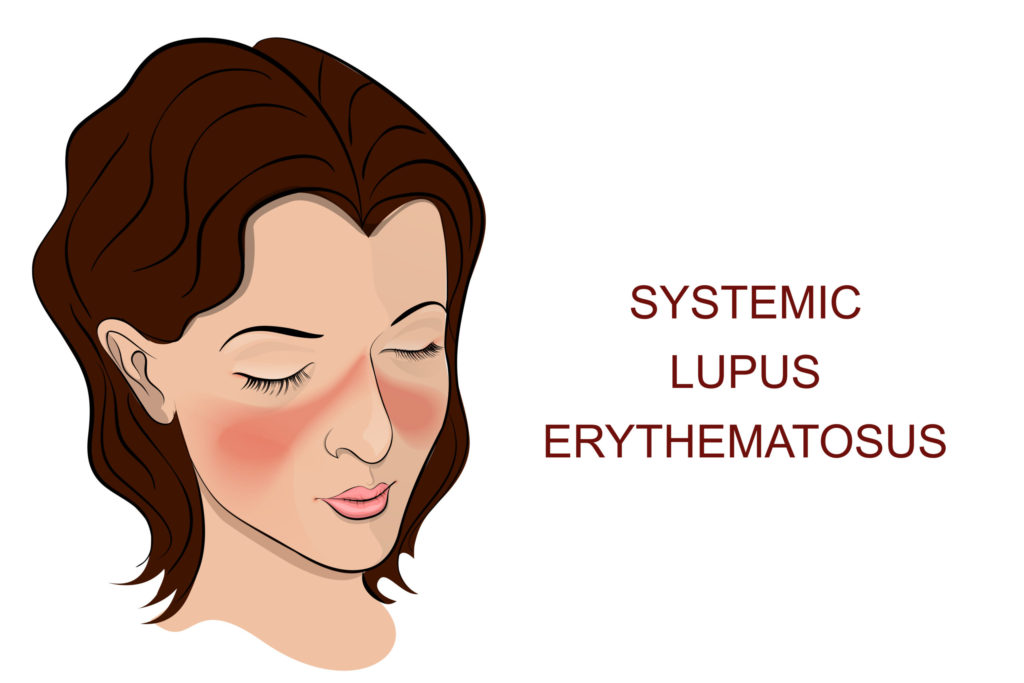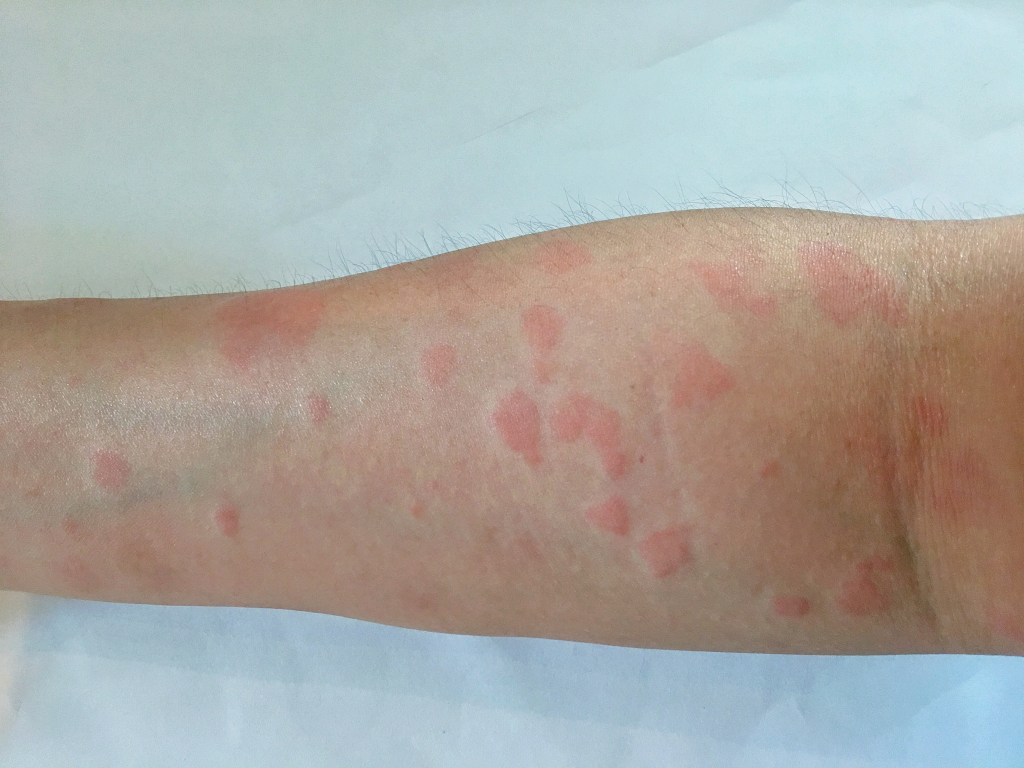Understanding the Lupus Challenge in Low Resource Settings
Healthful Vitality | 04/12/2019 | By Dr. Thandiwe Jere | Understanding the Lupus Challenge in Low Resource Settings

Autoimmune diseases remain a conundrum that is yet to be fully understood, with an estimated 151 listed pathologies, according to the American Autoimmune Related Diseases Association (AARDA). Although the prevalence of AIDs continues to rise, owing in part to better diagnostics and robust research in the field, most of the statistics are based on data from western countries where there is better access to specialized facilities, with more trained rheumatologists/immunologists and expertise in the field. Little data is available on patients in resource-deficient settings such as Sub-Saharan Africa. One classic example is Systemic Lupus Erythematosus (SLE). The article explores understanding the lupus challenge in low-resource settings.
Systemic Lupus Erythematosus
SLE is notably a chronic autoimmune disease characterized by autoantibody production, immune complex deposition, and multi-organ inflammation. SLE predominantly affects women of childbearing age with a 9:1 ratio compared to men. However, males affected have also been shown to present with equally severe symptoms and higher disease activity at diagnosis (1). Multiple factors have been identified that contribute to the aetiology and increase the risk of developing SLE, including genetic predisposition, hormonal, and environmental factors. Also, the heterogeneity of SLE is attributed to ethnicity, with the highest prevalence in Hispanics, Asians, and African populations. Studies have shown the earlier onset of lupus nephritis with worsening symptoms in Black and Hispanic women than in Caucasians (2,3).
Understanding the Lupus Challenge: The complexity of SLE
The wide spectrum of clinical manifestations adds to the complexity of SLE, making diagnosis and treatment a challenge. Clinical symptoms can range from mild joint and skin involvement to life-threatening renal, hematologic, or central nervous system involvement. Besides, SLE can also present with symptoms similar to other autoimmune or infectious diseases, making the list of differential diagnoses wide. There is increasing knowledge, and strides have been made to understand the pathogenic pathways that lead to autoantibody production, immune complex deposition in end organs, and defective clearance of inflammatory debris. However, the triggers that break tolerance and start the cycle of autoreactivity and inflammation still need to be clarified in different patients.
SLE Proves Unpredictable; Making Cannot Be Generalized across Patients
Unlike infections with predictive cycles and disease progression indicators, SLE proves to be unpredictable. And the course of disease cannot be generalized across patients because of the heterogeneity. This situation is seen even in members of the same family. Through Genome Wide Association Studies (GWAS), over 40 susceptibility genes associated with SLE have been identified. And, indeed, this makes the disease even more heterogeneous across patients (4). Therefore, understanding the pathogenesis should emphasize associated risk factors, treatment options, and pathway of care in SLE for all clinicians and healthcare personnel involved in treating these patients. In addition, because the clinical presentation and diagnosis can be complicated and multifactorial for each patient, Lupus care needs to be individualized to ensure effective control and management of symptoms.
Understanding the Lupus Challenge: Diagnosis of SLE
Diagnosis of SLE is based on clinical findings and immunological tests that identify Anti-nuclear Antigens (ANAs) and autoantibodies such as anti-dsDNA and anti-Sm which are highly specific for SLE. The revised American College of Rheumatology (ACR), and the Systemic Lupus International Collaboration Clinics (SLICC) diagnostic criteria are classically used and list symptoms necessary to diagnose Lupus. However, it should be emphasized that diagnosis should encompass the clinical history, laboratory findings, as well as the patient’s ethnicity and demographics. This is because positive ANAs do not always mean a person has autoimmune disease or Lupus, as several factors can contribute to this and false positives can occur in about 20% of healthy women (5). Therefore, further testing for specific autoantibodies is required.
Is There Cure for SLE?
To date, there is no known cure for SLE. And the current treatments are targeted at symptom management and controlling inflammatory flares. Management of SLE involves usage of drugs such as Non-steroidal anti-inflammatory drugs, Corticosteroids, Hydroxychloroquine, Azathioprine, Methotrexate, biologics such as Rituximab and Atacicept (6), and more recently Belimumab, the only FDA-approved monoclonal antibody targeting autoreactive B cells involved in autoantibody production (7).
Working in resource-limited hospitals reveals a different perspective on what dealing with autoimmune disease looks like. While the challenge of managing SLE patients is universal, there is an added layer for clinicians working in sub-Saharan Africa and low-resource settings. Aside from the lack of resources, one of the biggest challenges in effectively identifying and diagnosing these patients has been the gap in knowledge regarding SLE.
Myth about Lupus
Like most autoimmune diseases, a prevailing myth that Lupus is a ‘western’ disease has long been a barrier to considering SLE as a differential diagnosis when presented with cases of chronic inflammation, arthralgia, fatigue, and malaise. This is, however, changing, as evidenced by several studies over the years. These studies have revealed the high prevalence and increasing numbers of patients in countries such as Nigeria, Egypt, and South Africa (8,9). The realization that SLE is more common on the African continent than previously assumed highlights the need for clinicians to become better equipped for early diagnosis and treatment.
The prevalence of infectious diseases like Malaria also poses a challenge as these symptoms can mask SLE and contribute to the underdiagnosis of the disease. Since SLE is episodic, and alternates between quiescence and active disease ‘flares’, the importance of identifying these patients early before they develop end organ inflammatory damage is crucial. Treatment of SLE in Africa is also restricted by the availability and affordability of immunosuppressive and antirheumatic drugs that may not be readily accessible to low income patients.

Patient Education and Counselling
Given all these challenges, how then should we approach patients with SLE in low resource settings? Patient education and counselling is central in the diagnosis and long-term management of SLE because patients need to understand their clinical symptoms and the disease process. Being diagnosed with an incurable, autoimmune disease can be daunting, and treatment should not be limited to clinical management alone but should be wholistic in nature. A major concern among patients is conception and safe pregnancy, and the added risks that SLE brings given the prevalence in women of child-bearing age. Lupus does not just affect the patient, and psycho-socio supportive care for family and guardians is key to promoting long term disease control, symptom management, and improving the overall daily quality of life for these patients.
Conclusion
Indeed understanding the lupus challenge in low resource settings is challenging. Because of the multisystem effect that SLE has, collaboration across different clinical disciplines is crucial and in settings where no trained rheumatologists exist, this becomes even more important to ensure effective patient care across the region. One notable collaboration is the establishment of the African Lupus Genetics Network (ALUGEN), a network of clinicians and researchers in Africa which seeks to facilitate combined clinical and research efforts to improve the outcomes for African SLE patients (10).
(Also Read: Multiple Myeloma and Nephropathy)
References:
- Muñoz-Grajales C., González LA., Alarcón GS., & Acosta-Reyes, J. Gender differences in disease activity and clinical features in newly diagnosed systemic lupus erythematosus patients. Lupus. 2016; 25(11): 1217–1223. Retrieved from https://pubmed.ncbi.nlm.nih.gov/26921269/
- Rees F., Doherty M., Grainge MJ., Lanyon P., and Zhang W. The worldwide incidence and prevalence of systemic lupus erythematosus: a systematic review of epidemiological studies. Rheumatology, 2017; 56(11): 1945–1961. Available at: https://pubmed.ncbi.nlm.nih.gov/28968809/
- Almaani S., Meara A., Rovin BH. Update on Lupus Nephritis. CJASN .2017; 12 (5) 825-835
- Almlöf JC., Alexsson A., Imgenberg-Kreuz J., et al. Novel risk genes for systemic lupus erythematosus predicted by random forest classification. Sci Rep. 2017;7(1):6236. Available at: https://pubmed.ncbi.nlm.nih.gov/28740209/
- Egner W. The use of laboratory tests in the diagnosis of SLE. J Clin Pathol. 2000;53(6):424–432. Available at: https://jcp.bmj.com/content/jclinpath/53/6/424.full.pdf
- Kuhn A., Bonsmann G., et al. The Diagnosis and Treatment of Systemic Lupus Erythematosus. Dtsch Arztebl Int. 2015;112(25):423–432. Available at: https://pubmed.ncbi.nlm.nih.gov/26179016/
- Marcondes F., and Scheinberg M. Belimumab in the treatment of systemic lupus erythematous: An evidence-based review of its place in therapy. Autoimmunity Reviews, 2018; 17(2):103-107. Available at: https://pubmed.ncbi.nlm.nih.gov/29180126/
- Tiffin N., Hodkinson B., and Okpechi I. Lupus in Africa: can we dispel the myths and face the challenges? Lupus. 2014;23(1):102-11. Available at: https://pubmed.ncbi.nlm.nih.gov/24174511/
- Phuti A., Schneider M., Tikly M., and Hodkinson B. Living with systemic lupus erythematosus in the developing world. Rheumatol Int. 2018;38(9):1601-1613. Available at: https://pubmed.ncbi.nlm.nih.gov/29582096/
- Hodkinson B., Mapiye D., Jayne D., Kalla A., Tiffin, N., & Okpechi, I. The African Lupus Genetics Network (ALUGEN) registry: standardized, prospective follow-up studies in African patients with systemic lupus erythematosus. Lupus. 2016; 25(3): 325–330. Available at: https://pubmed.ncbi.nlm.nih.gov/26405020/
Author:
Thandiwe Jere is a research scientist with a healthcare background. She holds a Master of Science (M.S.) degree (Fulbright Scholar) from the University of Nebraska Medical Center. Thandiwe is currently pursuing a Doctor of Philosophy (Ph.D.) at Baylor College of Medicine. Before that, she has earned a Bachelor of Medicine, Bachelor of Surgery (M.B.B.S.) degree.
